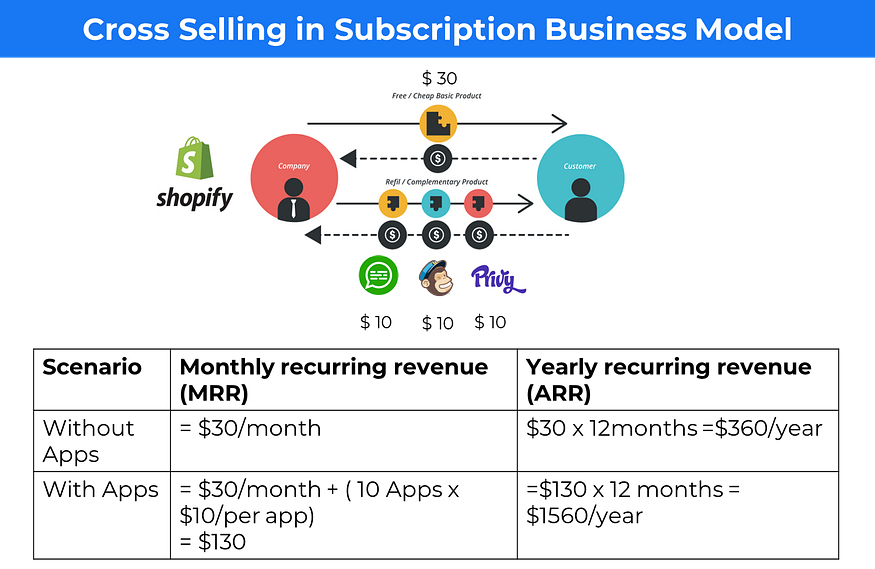Subscription business models are based on the idea of selling a product or service to receive monthly or yearly recurring subscription revenue.
Companies using this type of business model are digital apps and software products (SaaS).
B2B Software — Shopify, Zoho, Mailchimp etc
B2C apps — Netflix, Linkedin etc

It will take away the headache of paying every single month using your credit card and also gives monthly reoccurring revenue to the company.
There are different types of Subscription business model

- Umbrella subscription — When you bundle up all your services under one subscription umbrella.
Example Amazon Prime — Under Prime Umbrella you will get One-day delivery, Amazon prime video and Prime Music. - Special subscription Pass — When subscription gives you the advantage of standing out from the crowd.
Examples: — Tinder and Dash Pass
Tinder — Recommend your profile to more girls
Dash Pass — Faster delivery with low fees. - Subscription box: When you take a subscription to a product that is delivered to your doorstep every month.
Example
Warby Parker sends Repeat prescriptions of Contact lenses every three months.
MeUndies — Two pairs of cheeky underwear delivered every month. - Ecosystem subscription — When companies lower the entry barrier and lock you in the ecosystem using a subscription business model.
Example: Shopify
Pros and Cons of using the Subscription Business Model
There are several benefits to using the Subscription business model
- Predictable CashFlow: After the first purchase they need to keep buying the product which leads to recurring profit with predictable cash flow.
- Good upselling and cross-selling opportunities:
If dollar shave Club is selling a premium range of blades then they can also sell other products like shaving cream, aftershave, etc. - Higher margins: The base product is usually sold at a loss, while the add-ons are added and are usually sold at higher margins.
The disadvantage of the Subscription business model
- Churn rate — You have to constantly add value to your customer else they will churn out and will badly affect your future cash flow.
Example: Netflix constantly release a new series every month to justify the monthly subscription - High Customer acquisition cost — There is a tiny fraction of people who can pay you every single month. So you need to spend a lot of money on acquiring them.

Cross Selling in Subscription Business Model

The basic plan of Shopify will cost you $30/month but to run a successful e-commerce store you need to install more than $10 apps.
Apps like Privy for review, Mailchimp for email, live chat for chatbot etc
Shopify takes 20% as a commission to host these apps in their App store and transfers the rest to developers.
Growth vector — Shopify subscription is priced low to attract new customers.
Revenue Vector — Once you are looked into the ecosystem then you can make more money by charging a 20% commission on these apps.
